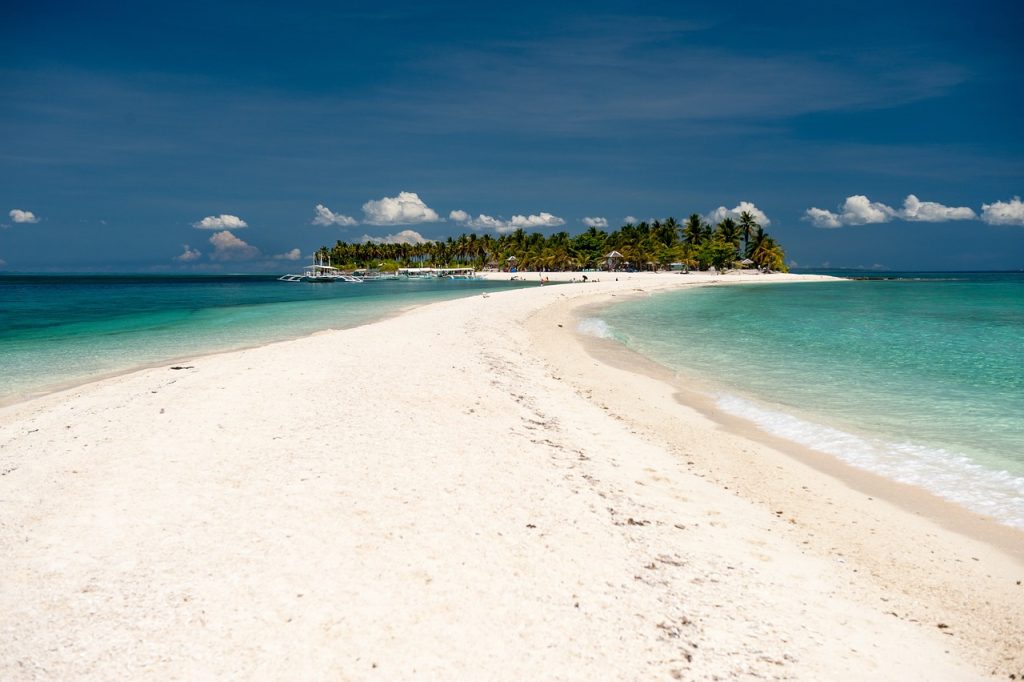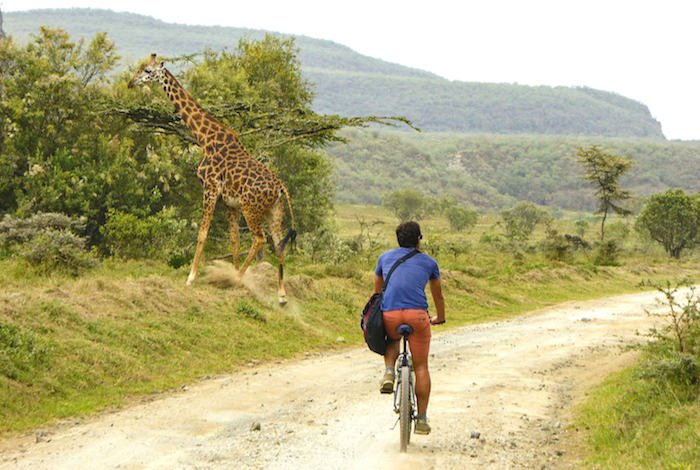The Philippines, a captivating archipelago in Southeast Asia, beckons travelers with its stunning beaches, rich culture and warm hospitality. This tropical paradise is known for its pristine shores, vibrant coral reefs and lush landscapes that make it an ideal destination for both relaxation and adventure. In this comprehensive guide, we’ll explore the key aspects of traveling to the Philippines, from budget considerations to breathtaking beach destinations, accommodation options, staying connected with international eSIMs and the best time to visit.
Cost of Travel in the Philippines
Budget Considerations
To embark on your Philippines adventure, it’s essential to plan your budget wisely. The cost of traveling in the Philippines can vary greatly depending on your preferences and choices. On average, a budget traveler can get by on $30-50 per day. This budget covers accommodation, local meals, local transportation and a few activities. If you spend $50 – $100 per day, you can really travel here without watching what you spend too much and possibly even use some internal flights or stay at nicer accommodations.
To save money while enjoying the best the Philippines has to offer, consider the following tips:
- Local Cuisine: Savor delicious Filipino street food and eat at local eateries, where you’ll find authentic flavors at a fraction of the cost.
- Public Transportation: Opt for public transportation options like tricycles and jeepneys to explore the cities, and use buses and ferries for intercity or inter-island travel.
- Activities: Choose free or low-cost activities like hiking, swimming and exploring cultural sites.
- Accommodation: Stay in budget-friendly hostels or guesthouses. Booking in advance often results in better rates as well.
Keep in mind, saving money on a trip usually starts before you even leave home. You should look at ways to save money on airfare or even accommodations using credit card points or travel tricks that can lead to some big savings.
Currency and Payment Options
The official currency of the Philippines is the Philippine Peso (PHP). ATMs are widely available, and credit cards are accepted in most urban areas. However, it’s advisable to carry some cash, especially when venturing into rural areas or onto smaller islands. It simply makes life easier as you don’t want to be stuck somewhere that doesn’t accept a credit card.
Breathtaking Beaches and Island Paradises
The Philippines is renowned for its beaches and island paradises, each with its own unique charm and attractions. Here are some of the most popular beach destinations:
Popular Beach Destinations
- Boracay: Known for its powdery white sand, Boracay is a paradise for beach lovers. It offers vibrant nightlife, water sports and stunning sunsets. This is my personal favorite for a beach vacation as it’s laid back and absolutely gorgeous! I could easily live on this island for a year.
- Palawan: Palawan is a tropical wonderland with limestone karsts, hidden lagoons, and crystal-clear waters. It’s beaches are surreal as well and it’s a haven for snorkeling and diving enthusiasts. There’s lush jungles and plenty of regions on the island to visit and explore. There’s also smaller islands off the coast, helping give Palawan its nickname of “Last Frontier of the Philippines”.
- Cebu: This large island not only offers its own beaches and the bustling Cebu City, it is conveniently located for visiting other nearby islands such as Bantayan, Bohol and Negros Island. Cebu itself also has waterfalls, canyons, hiking options and snorkeling sites and it is one of the more developed tourist destinations in the country.
- Siargao: Quickly gaining in popularity, this beautiful island has white sand beaches, great surfing, rock climbing and cave exploration options. It’s also very relaxed and offers a livable atmosphere that has attracted many visitors looking to stay in the Philippines for a longer period of time.
- Malapascua: Only a few kilometers off the northern coast of Cebu Island, this tiny paradise is the place to go if you just want to chill. It’s really small (2.5 km x 1 km) and rather quiet compared to larger islands. There are some good accommodations, restaurants and bars for those who really want a peaceful beach experience.
- Bantayan: This island is less known with visitors but it offers plenty. It’s a very relaxed island yet it’s big enough to fill your days with activity. There are several towns on the island, night markets, all kinds of accommodation options, caves to explore, cultural spots, kayaking, great food and more. The area around Kota Beach (a gorgeous beach) is quite lively, with plenty of nightlife too.
Each of these destinations offers a unique blend of natural beauty and activities. Whether you seek relaxation, adventure or a bit of both, the Philippines has an island for you.
Accommodation: Hotels, Resorts, and Airbnb
Hotel and Resort Recommendations
On most islands, you’ll find a wide range of accommodations. Here are some recommendations:
- Hotels: In the more popular areas, you’ll find a variety of hotels of all sizes and for all budgets. In many places, you can land a really nice 3* hotel for around $30 USD per night or a 4* hotel for around $50 per night. Definitely read reviews and make sure the hotels you choose have the facilities you need.
- Resorts: Some of the islands offer larger resort type accommodation, including some with overwater bungalows. If you’re looking for a more secluded beach experience where all of your needs are taken care of in one place, a resort might be the answer as most have multiple restaurants, their own beach area, swimming pools and plenty of activities.
- Guesthouses: These smaller accommodations are my favorite while traveling around the Philippines. In general, they tend to be family-owned, smaller and simpler than larger hotels and resorts. But if you do proper research, you can find excellent options, with comfortable rooms and a friendly vibe, for a fraction of the price of a larger hotel. And don’t worry, there are plenty of guesthouses that offer bungalows right on the beach as well.
Exploring Airbnb in the Philippines
Airbnb has gained popularity in the Philippines, offering travelers a different type of experience. Staying in an Airbnb property often allows you to connect with local hosts and discover a different side of each island. Here are some tips for finding and booking Airbnb properties:
- Research: Explore a variety of options, read reviews and communicate with hosts to understand the property’s suitability for your trip.
- Location: Consider the location carefully. Do you want to be in the heart of the city, near the beach or in a quiet rural area? Make sure you are not isolated from the activities you want to do.
- Amenities: Check the amenities provided, including Wi-Fi, kitchen facilities and any unique features that may enhance your trip.
- Local Insights: Don’t hesitate to ask your host for local recommendations, as they often provide valuable insights into the best activities, eateries and cultural experiences.
Staying Connected with Convenient eSIMs
Internet Connectivity in the Philippines
Staying connected while traveling is essential for navigating, sharing experiences and staying in touch with friends and family. In the Philippines, you’ll find various options for internet connectivity, including Wi-fi in hotels and public places. However, the connections are often not reliable and it is very common for Wi-fi to stop working or to be extremely slow. For seamless and reliable internet, I recommend Holafly as the best eSIM card for the Philippines.
Benefits of eSIMs for Travelers
Holafly eSIM cards offer several advantages for travelers in the Philippines:
Easy Setup and Activation: Setting up an Holafly eSIM card is quick and hassle-free. There’s no need to swap physical SIM cards or visit a local store. You simply download the eSIM onto your phone and follow the simple activation instructions as soon as you arrive in the Philippines. Here are the easy steps:
- Go to Holafly’s eSIM card Philippines page
- Check the box that says “Phones compatible with eSIM” to make sure your phone is on the list
- Choose the plan that suits your travels and add it to the cart
- Go to “Checkout” and pay for the eSIM (Discount: Use code WANDERINGEARL for 5% off any Holafly purchase!)
- You’ll then receive an email with simple instructions
- Before you depart for your trip, follow the activation instructions in the email
- Now you’ll be connected as soon as you turn on your phone upon arrival in your destination!
Flexible Data Plans: Choose from a variety of flexible data plans to suit your needs, whether you require a lot of data for streaming or just basic internet access for communication. Holafly offers great data plans for the Philippines, such as:
5 days Unlimited Data = $19.00 USD
7 days Unlimited Data = $27.00 USD
10 days Unlimited Data = $34.00 USD
15 days Unlimited Data = $47.00 USD
20 days Unlimited Data = $54.00 USD
*As you can see, all Holafly eSIM data plans come with UNLIMITED DATA for the time period specified, so you don’t need to constantly watch how much data you’re using. If you’re approaching the end of your eSIM’s time period, you can easily top up using the Holafly app in order to keep your connection going without interruption.
With an Holafly eSIM card in the Philippines, you’ll enjoy reliable coverage throughout the country, from the moment you land. This eliminates the frustrations involved with trying to find a stable Wi-fi connection in the Philippines.
Best Time to Visit the Philippines
Climate and Weather Overview
The Philippines experiences a tropical climate with two main seasons:
- Dry Season: From November to April, this season is ideal for beach vacations and outdoor activities. You can expect clear skies and warm temperatures, although it may be too warm for some in November and March/April. December to February is the most ideal period.
- Wet Season: From May to October, the Philippines experiences its rainy season. However, this season only brings occasional rain and it’s still an excellent time to visit, especially if you want smaller tourist crowds.
Of course, the best time to visit depends on your preferences but the Philippines is one of those destinations that can be visited and thoroughly enjoyed year round. I’ve been to the country in both the dry and wet seasons and there was barely a difference. There were occasional rain showers during the wet season but it absolutely did not affect my trip in any major way.
Conclusion
In summary, the Philippines is a captivating travel destination that caters to various budgets and preferences. From the pristine beaches of Boracay, Siargao and Palawan to diverse accommodation options, including hotels, resorts and Airbnb properties, there’s something for everyone. Staying connected is a breeze with a convenient Holafly eSIM card, and there are great destinations no matter what time of year you want to visit.
Make the most of your Philippines adventure by planning wisely so that you can fully enjoy the natural beauty, rich culture and warm hospitality of this incredible archipelago. Whether you’re a beach bum, an adventure seeker or a cultural explorer, the Philippines has it all.
I’ve been several times and each time, I choose a couple of different islands to visit. Every trip has been incredibly rewarding and I always look forward go going back!
The post Philippines Travel: Costs, Islands, Weather, Internet & More appeared first on Wandering Earl.











